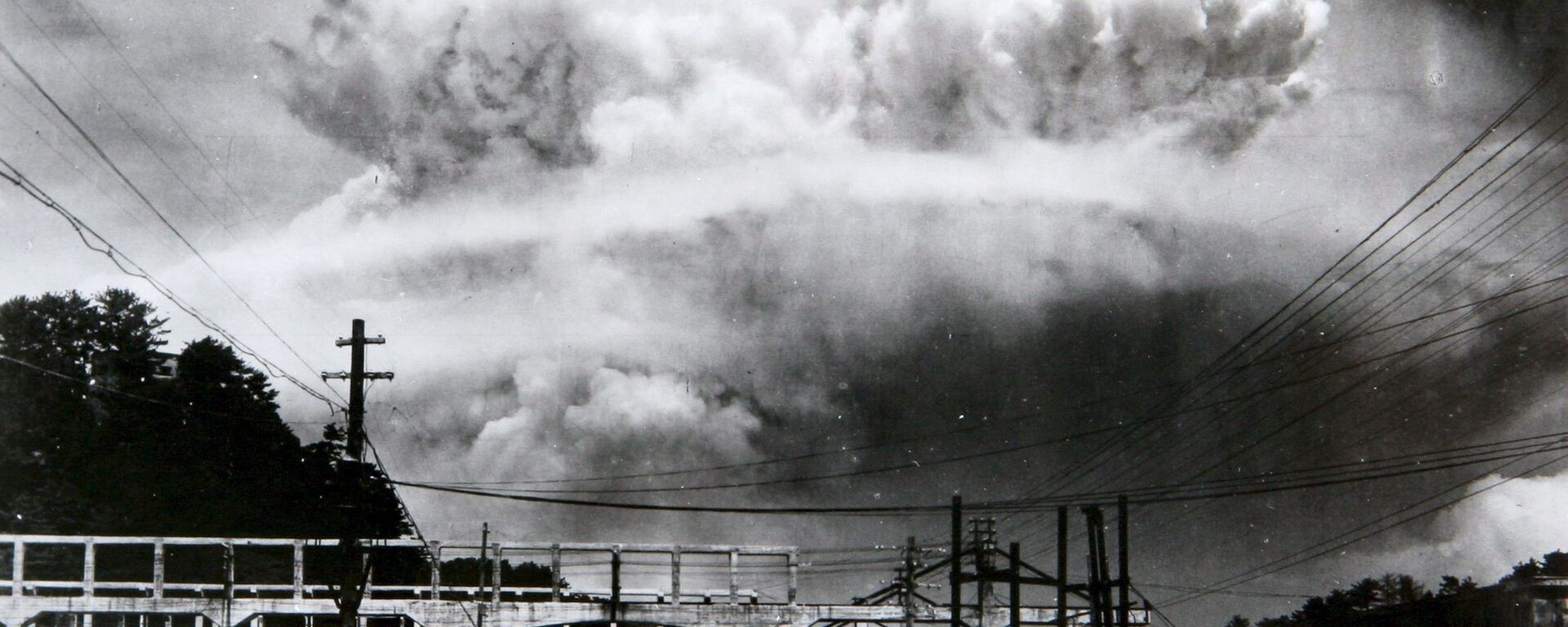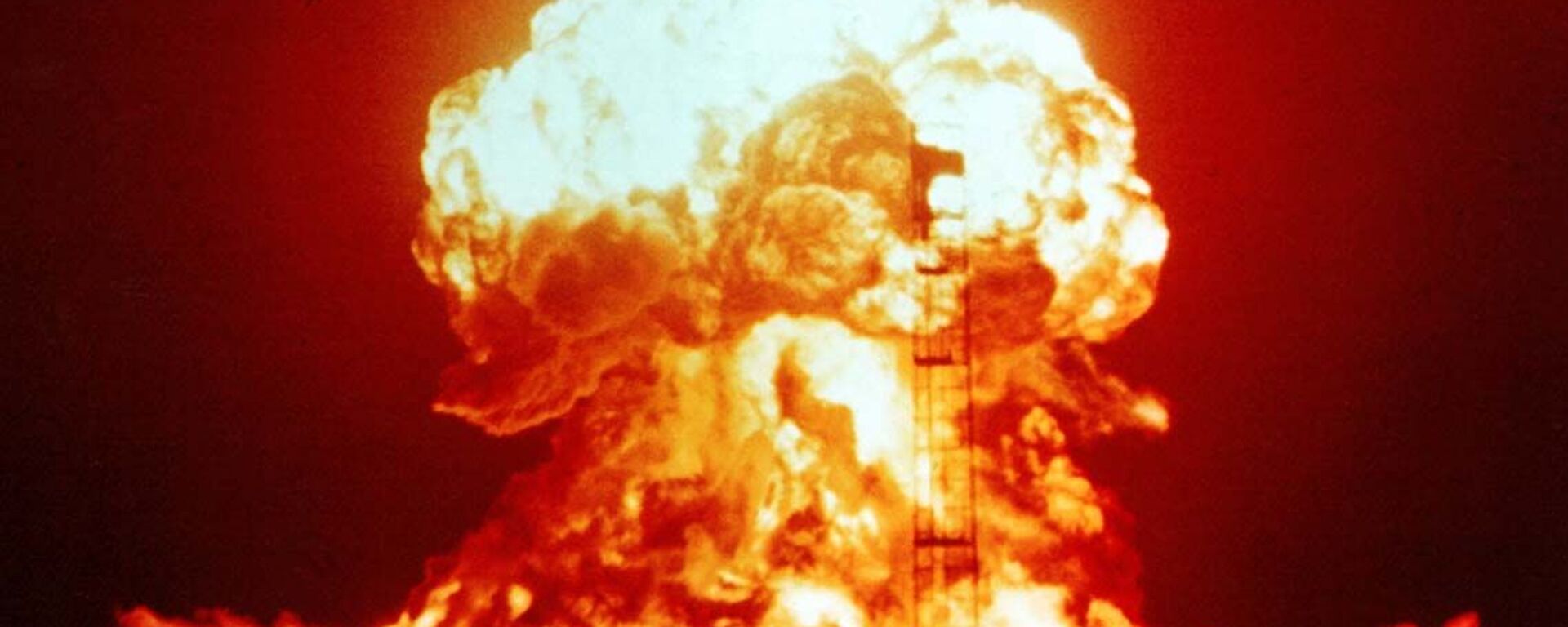https://sputnikglobe.com/20230124/the-hands-that-threaten-doom-what-is-the-doomsday-clock--why-it-creeps-closer-to-midnight-1106658940.html
'The Hands That Threaten Doom': What is the Doomsday Clock & Why It Creeps Closer to Midnight
'The Hands That Threaten Doom': What is the Doomsday Clock & Why It Creeps Closer to Midnight
Sputnik International
Humanity got a fresh update on how close it currently sits to the brink of annihilation this January 24, with the risks of horrific catastrophes and nuclear... 24.01.2023, Sputnik International
2023-01-24T17:40+0000
2023-01-24T17:40+0000
2023-01-24T17:40+0000
sputnik explains
doomsday clock
update
https://cdn1.img.sputnikglobe.com/img/101725/73/1017257347_0:170:3243:1994_1920x0_80_0_0_dcd165679ab6677beba2a5f1d04e02d1.jpg
This heads-up was delivered via the so-called “Doomsday Clock,” becoming the first such update since the launch of Russia’s military operation in Ukraine last year.The clock, which was previously set at 100 seconds to midnight in January 2020, has now been readjusted to 90 seconds to midnight, thus hinting at the mounting risks for humanity – or so we are supposed to believe.How Was the Doomsday Clock Created?The Doomsday Clock is the brainchild of a non-profit organization called The Bulletin of the Atomic Scientists and their eponymous magazine founded in 1945. It was established by the people involved in the creation of the nuclear weapons used by the United States to obliterate Hiroshima and Nagasaki that year – members of the Manhattan Project.The Doomsday Clock – a symbol representing the likelihood of a global manmade catastrophe happening – was revealed by the group in June 1947 when it was featured for the first time on the magazine’s cover.The twelve-hour mark on the clock, the “midnight”, represents the catastrophe, and the closer the clock appears to be to striking midnight, the greater the risk.The Doomsday Clock is set annually by the Bulletin of the Atomic Scientists’ Science and Security Board. So far, however, the clock has been moved forward and backward only 24 times, having initially been set to seven minutes to midnight.What Dangers Does the Doomsday Clock Warns About?Initially, The Bulletin of the Atomic Scientists focused on the danger of atomic warfare, with the hands of the Doomsday Clock creeping towards midnight for the first time after the Soviet Union successfully tested its nuclear weapon, thus putting an end to the US nuclear monopoly.Eventually, however, the clock’s creators started taking the threat of climate change into account, although the prospects of a nuclear armageddon still remained their chief concern.How Accurate is the Doomsday Clock?The Doomsday Clock essentially depicts how a particular group of people regard the current situation in the world from the global risk assessment standpoint.The judgment of the experts overseeing the clock, however, has been repeatedly criticized in the past – for example, some pointed out that the scientists behind the Doomsday Clock did not seem to be all that alarmed during the Cuban Missile Crisis in 1962, when nuclear war seemed quite real.One member of the clock’s board, however, did previously remark that the Doomsday Clock does not change “in response to individual events.”The fairness and objectivity of the people responsible for setting the Doomsday Clock may also seem somewhat suspect, especially in light of the statement they made regarding the “time” the clock shows now.They were quick to accuse Russia of bringing “war” to the Zaporozhye Nuclear Power Plant, but neglected to mention the fact that Ukrainian forces have repeatedly shelled that same nuclear plant, creating a tangible risk of a nuclear catastrophe that the bulletin’s scientists seem to not be so concerned about.
https://sputnikglobe.com/20221025/why-us-nuking-of-hiroshima-and-nagasaki-should-be-legally-assessed-by-intl-court-1102647785.html
https://sputnikglobe.com/20230124/biden--neocon-war-on-russia-leading-world-to-annihilation-global-peace-activist-warns-1106631462.html
Sputnik International
feedback@sputniknews.com
+74956456601
MIA „Rossiya Segodnya“
2023
News
en_EN
Sputnik International
feedback@sputniknews.com
+74956456601
MIA „Rossiya Segodnya“
Sputnik International
feedback@sputniknews.com
+74956456601
MIA „Rossiya Segodnya“
sputnik explains, doomsday clock, update
sputnik explains, doomsday clock, update
'The Hands That Threaten Doom': What is the Doomsday Clock & Why It Creeps Closer to Midnight
Humanity got a fresh update on how close it currently sits to the brink of annihilation this January 24, with the risks of horrific catastrophes and nuclear war portrayed via a painted clock.
This heads-up was delivered via the so-called “Doomsday Clock,” becoming the first such update since the launch of Russia’s military operation in Ukraine last year.
The clock, which was previously set at 100 seconds to midnight in January 2020, has now been readjusted to 90 seconds to midnight, thus hinting at the mounting risks for humanity – or so we are supposed to believe.
How Was the Doomsday Clock Created?
The Doomsday Clock is the brainchild of a non-profit organization called The Bulletin of the Atomic Scientists and their eponymous magazine founded in 1945. It was established by the people involved in the creation of the
nuclear weapons used by the United States to obliterate Hiroshima and Nagasaki that year – members of the Manhattan Project.

25 October 2022, 19:38 GMT
The Doomsday Clock – a symbol representing the likelihood of a global manmade catastrophe happening – was revealed by the group in June 1947 when it was featured for the first time on the magazine’s cover.
The twelve-hour mark on the clock, the “midnight”, represents the catastrophe, and the closer the clock appears to be to striking midnight, the greater the risk.
The Doomsday Clock is set annually by the Bulletin of the Atomic Scientists’ Science and Security Board. So far, however, the clock has been moved forward and backward only 24 times, having initially been set to seven minutes to midnight.
What Dangers Does the Doomsday Clock Warns About?
Initially, The Bulletin of the Atomic Scientists focused on the danger of atomic warfare, with the hands of the Doomsday Clock creeping towards midnight for the first time after the Soviet Union successfully tested its nuclear weapon, thus putting an end to the US nuclear monopoly.

24 January 2023, 01:12 GMT
Eventually, however, the clock’s creators started taking the threat of climate change into account, although the prospects of a nuclear armageddon still remained their chief concern.
How Accurate is the Doomsday Clock?
The Doomsday Clock essentially depicts how a particular group of people regard the current situation in the world from the global risk assessment standpoint.
The judgment of the experts overseeing the clock, however, has been repeatedly criticized in the past – for example, some pointed out that the scientists behind the Doomsday Clock did not seem to be all that alarmed during the Cuban Missile Crisis in 1962, when nuclear war seemed quite real.
One member of the clock’s board, however, did previously remark that the Doomsday Clock does not change “in response to individual events.”
The fairness and objectivity of the people responsible for setting the Doomsday Clock may also seem somewhat suspect, especially in light of the statement they made regarding the “time” the clock shows now.
They were quick to accuse Russia of bringing “war” to the
Zaporozhye Nuclear Power Plant, but neglected to mention the fact that Ukrainian forces have repeatedly shelled that same nuclear plant, creating a tangible risk of a nuclear catastrophe that the bulletin’s scientists seem to not be so concerned about.



